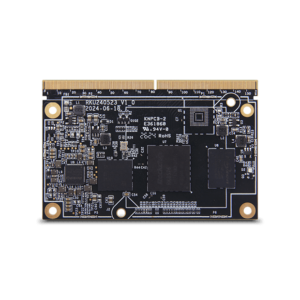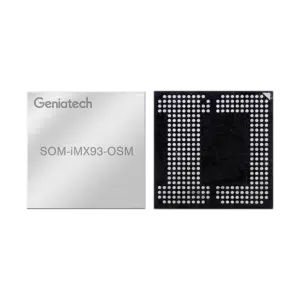System on Module vs. Traditional Development: Which Is Right for You?
System on Module vs. Traditional Development: Which Is Right for You?
Blog Article
The rapid growth of technology has driven significant inventions in embedded systems, one of that is the imx8 system on module Working as a link between custom technology and off-the-shelf modules, the SoM is redefining how designers approach embedded process design. That blog highlights the primary comprehension of a Process on Element and its growing purposes in a variety of industries.

What is a System on Component (SoM)?
A Program on Module (SoM) is really a small, ready-to-use table that integrates most of the primary aspects of something about the same module. That typically includes the model, memory, power administration items, and often additional peripherals like Wi-Fi or Ethernet. Unlike a normal single-board pc, an SoM does not include connections and software locations pre-installed, meaning it must be coupled with a company panel to create a complete system.
Made to streamline development workflows, the modular nature of an SoM allows developers to skip the complex means of developing and building every person element from scratch. By adopting an SoM, companies may focus more on the application-specific characteristics of their products.
Benefits of Using Program on Module
The integration of an entire process on one module presents several benefits. First, it significantly reduces the time necessary for product development. Pre-tested adventures assure security, keeping months of work for engineering teams.
Also, the scalability of an SoM enables businesses to regulate performance levels centered on project requirements. For instance, a low-cost alternative can quickly range in to a high-end solution by changing the model in the component while keeping the company table design. This approach decreases executive risks while selling long-term cost-efficiency.
Last but not least, the consistency of an off-the-shelf module guarantees large compatibility with present resources and frameworks, making it perfect for equally small startups and large enterprises aiming to to enter the market quickly.
Key Applications of SoM in Stuck Methods
The usage of Process on Segments spans several high-demand industries including however not restricted to medical products, automation, and consumer electronics.
Medical Products
Accuracy and reliability are paramount in healthcare. Program on Segments with secure processing abilities are embedded in displays, imaging products, and lightweight diagnostic tools.
Industrial Automation
Effective and energy-efficient, an SoM is crucial for professional get a grip on programs and autonomous robotics. Their scalable architecture helps high-speed data handling and IoT connectivity.
IoT Units

Consumer products and services like smart thermostats, wearable devices, and even house personnel integrate an ultra-compact Program on Element for smooth performance.
The Program on Module continues to gain footing due to its paid down complexity and versatility, cementing itself as a future-proof alternative in the stuck methods sphere. Market leaders happen to be leveraging these modules, and their range is likely to grow even further as technology evolves.
Report this page